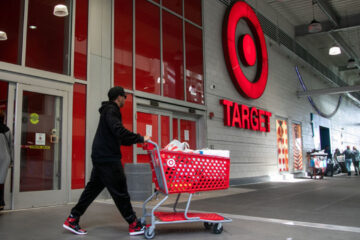The social media platform is shutting down its live shopping function for good this time.
For a long time, Facebook has put a lot of its hopes on online shopping.
The social media platform that rebranded itself as Meta META last October has been losing users for the first time since launching in 2004 and generally seeing popularity wane as its userbase ages.
Facebook’s leaders have largely shrugged off these concerns for promises to build a metaverse-forward platform — the name change to Meta reflects the platform’s desire to be seen as the leader in the next iteration of the internet, which is currently loosely described as a combination of virtual reality, augmented reality, and video.
But as analysts debate when and if the metaverse will become a thing (some believe it will fizzle out to little more than the internet we see now with a little more 3D features), e-commerce has become the more immediate way to draw in users.
Facebook’s Long Journey With E-Commerce
Back in 2020, the social media site launched Facebook Shops, a shopping platform where companies can create virtual storefronts and display product links to other sites.
At around the same time, Facebook also introduced a feature that influencers and businesses could use to market what they’re selling in a livestream.
While the feature allowed sellers to show off a given product in live time, it was not as popular as Facebook likely expected and also got lost amid a number of other available features.
This week, the company announced that the live shopping feature would disappear on October 1.
“You will still be able to use Facebook Live to broadcast live events, but you won’t be able to create product playlists or tag products in your Facebook Live videos,” the company said in a blog post. “As consumers’ viewing behaviors are shifting to short-form video, we are shifting our focus to Reels on Facebook and Instagram.”
The main difference after the change will be that the reel format pushes sellers to keep their marketing on the shorter side; Instagram reels have a 90-second time limit.
E-Commerce Tech: What Will Stick Around?
By now, it’s blatantly obvious that many are buying the things they see on social media straight from the platform. Research from the Internet Marketing Factory found that 60% of surveyed millennial and Generation Z internet users buy something they see on a social media platform once a month.
Clothing (41%) and beauty products (23%) were the most common items purchased.
But while Facebook Shops and Facebook Marketplace are both incredibly popular (the former was able to reach one million active users just a year after launching), the live shopping function struggled to take off in the U.S. in the same way that it has in China.
Long before the rise of the internet, the country had live television marathons in which a host would hold up a product for viewers to call in and order.
As the process moved over to websites and social media, numbers from management consulting firm McKinsey found that livestreaming sales make up over 10% of all e-commerce in China.
Meanwhile, in the U.S., these types of “marathons” are less popular than static posts and shorter reels.
“To set up a livestream event, companies typically engage a key opinion leader (KOL) or key opinion consumer (KOC) to host the show, introduce the product, and interact with the audience to trigger sales,” reads the report.


